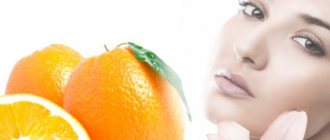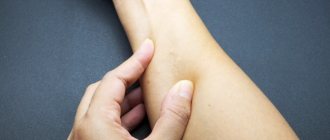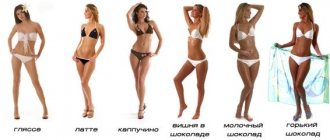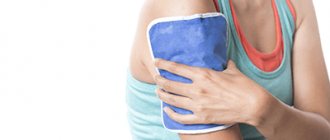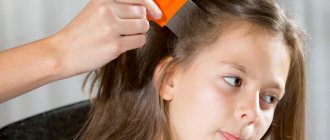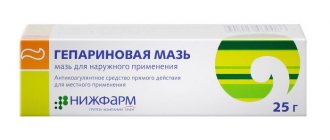According to medical statistics, the problem of orange peel is familiar to 9 out of 10 women. Moreover, both overweight ladies and girls with normal weight suffer. Cellulite is a serious aesthetic problem that can and should be combated.
Unfortunately, a magic remedy for orange peel has not yet been invented, but each of us can return the skin to a fresh and elastic appearance. Understanding the mechanisms of formation of this condition will help to find real solutions that are far from myths and give a positive end result. Today we stand up to protect the most attractive areas of the female body.
What is "orange peel"
When most women hear the phrase “orange peel,” they imagine not a juicy fruit, but lumpy skin in the area of the buttocks, thighs, or abdomen. There is also another common name for this skin condition, namely “cellulite,” which is not entirely true. From the point of view of medical terminology, “cellulite” refers to a specific disease characterized by inflammation of the subcutaneous fatty tissue caused by harmful bacteria (streptococci or staphylococci). Nevertheless, this term has entered into colloquial speech and changes in the skin, similar to the peel of citrus fruits, due to their bumpiness, are also called cellulite (it is in this understanding that cellulite will be discussed in this article). The exact name, reflecting the orange skin condition, is “gynoid lipodystrophy,” which literally means “female-type adipose tissue nutritional disorder.”
How cellulite is formed
From the point of view of pathological changes, cellulite is characterized by three signs:
- hypertrophy (excessive increase) of subcutaneous fatty tissue;
- violation of microcirculation (that is, lymph circulation in the capillaries);
- compaction of connective tissue.
Due to the fact that manifestations of orange peel often occur in slender girls, it is fair to believe that the root cause lies in impaired microcirculation, and not hypertrophy of adipocytes. The rate of fat accumulation in adipocytes is directly proportional to the intensity of blood circulation. The better the microcirculation, the stronger the lipolysis (the process of fat breakdown), and if it worsens, the stronger the lipogenesis (fat accumulation). Violation of microcirculation provokes edema. Stagnation practically excludes adipocytes from the overall fat metabolism in the body and fat ends up locked in the cells. Adipocytes begin to enlarge. Prolonged hypoxia leads to the growth and further compaction of connective tissue septa, forming dense capsules that protrude towards the skin. This is cellulite at its apogee.
A visual representation of pathological processes with “orange peel”
Causes of “orange peel”
The causes of orange peel can be direct or indirect and lead to it over years or in a short period of time. In each specific case, the factors vary, but they all lead to local disturbances in metabolic processes, causing swelling, enlargement of adipocytes and proliferation of connective tissue.
Internal predisposing factors:
- hormonal - during the reproductive period of a woman’s life, hormonal fluctuations are regular and are determined by the ability to conceive and bear a fetus. Subcutaneous fatty tissue is exposed to the action of estrogens, one of the main functions of which is the destruction of collagen fibers in order to increase tissue extensibility. A meager amount of collagen fibers promotes adipocytes to acquire a chaotic arrangement and form nodes. In addition, an increase in the production of estrogen and prolactin leads to increased fat formation. Thus, a woman’s individual hormonal background and its fluctuations during certain periods of life can cause cellulite;
- vascular and discirculatory - disruption of normal blood and lymph circulation leads to poor tissue nutrition. The cause is swelling resulting from the retention of sodium salts in the body, which retain water;
- pathological conditions - varicose veins, lymphostasis, liver disease, heart failure.
External predisposing factors:
- hypodynamia - a sedentary lifestyle and lack of physical activity inhibits the process of oxygen saturation of tissues, which inhibits collagen production. A decrease in muscle activity slows down the pumping of lymph through large vessels, developing its stagnation in the lower extremities and pelvic area. A general slowdown in metabolic processes, due to the lack of load on the muscles, leads to active lipogenesis;
- improper nutrition - food poor in vitamins, macro- and microelements does not provide the body with everything necessary for the normal metabolism of sex hormones, as a result the level of estrogen increases;
- smoking - nicotine suppresses the process of fat breakdown, first provoking dilation and then spasm of peripheral blood vessels. Lymphostasis and venous insufficiency develop. Nicotine also accelerates the destruction of collagen;
- stress, sleep disturbances - prolonged negative psycho-emotional stress leads to disturbances in vascular tone, prolonged vascular spasms, which prevents the delivery of oxygen and nutrition to tissues and blocks the outflow of metabolic products. Stress also negatively affects the adrenal glands, whose hormones are designed to regulate water balance, and other endocrine glands;
- excess weight - overgrown adipose tissue compresses blood vessels, increases venous insufficiency and causes lymphostasis. In addition, due to the high content of the enzyme in it that transforms androgens into estrogens, the latter accumulates in the subcutaneous fatty tissue.
Causes of cellulite
The cosmetic defect in most cases affects women. One of the main causes of abnormal adipocyte deposition is an imbalance of estrogen (the female sex hormone). Dermatologists also name among the culprits for the appearance of cellulite on the legs:
- diseases of the thyroid gland and endocrine system;
- disruptions in protein and fat metabolism, albumin deficiency;
- hereditary predisposition;
- physical inactivity. A sedentary lifestyle provokes the appearance of excess weight and the accumulation of fat on the hips, legs and inner surface of the arms;
- stress _ Strong excitement is accompanied by a surge of adrenaline. The hormone affects all indicators in the body, including fat metabolism. Poor blood and lymph circulation. Because of this, the outflow of fluid is disrupted, and the end products of metabolism are not quickly eliminated from the body. Therefore, problems begin with the renewal of skin, subcutaneous tissue and adipose tissue;
- smoking . Nicotine significantly affects blood circulation. The vessels become thinner and do not drain fluid from the tissues in a timely manner. Also, tars and heavy metals that are present in tobacco absorb oxygen worse and take up carbon dioxide more slowly. All this negatively affects the condition of the skin;
- poor nutrition combined with physical inactivity . A sedentary lifestyle, eating foods with a lot of salt, fat and carbohydrates negatively affect the condition of the skin and subcutaneous tissue.
Stages of orange peel development
The four-stage scale for determining the stage of cellulite using external examination with palpation is called the Nuremberger-Müller method.
Zero stage
Stage zero corresponds to the normal state of adipose tissue. The skin is still even and smooth, but slight swelling appears due to the onset of fluid accumulation between the adipocytes. In case of skin damage, be it a scratch or a hematoma, the healing process is delayed.
First stage
Swelling increases and the first signs of lumpy skin appear when it is gathered into a fold between the fingers or when standing with muscle tension. The subcutaneous fat layer becomes harder to the touch. At this stage, the amount of fluid that needs to be removed is already much greater than the amount that the venous system can handle. There is a violation of lymph flow and, as a result, pressure in the tissues increases.
Second stage
The next third stage already has its own name: micronodular or microlobular. This name is due to the fact that fat cells compact and form micronodules or, more simply, nodules (lobules). In addition to the veins, arteries also suffer from swelling. The weakened flow of arterial blood leads to poor washing of tissues with blood, oxygen deficiency and excess waste are produced. The result is the proliferation of fibrous connective tissue (or fibrosis), the formation of a mesh structure. Degenerative processes occurring under the skin inevitably lead to gross external changes in the skin. Lumps appear in the areas of fatty nodes, and fibrous septa are pulled in the opposite direction, forming pits. This condition is easy to distinguish even through clothing and with relaxed muscles in a standing position. On palpation, heterogeneity of the structure is felt, the skin is pale, dry and cold.
Third stage
Macronodular or nodular stage. Micronodes begin to merge with each other, forming macronodes. Further growth of connective tissue and a progressive increase in fatty nodes leads to the involvement of nerve fibers in the process and their compression. On palpation, the skin is hard, has a bluish tint in appearance, and moving lumps can be felt. The holes and grooves are visible not only in a standing position, but also in a lying position.
- The zero and first stages are easy to correct and are essentially cosmetic defects, but in the absence of measures they progress to the next stages.
- Starting from the second stage, all changes are more likely to relate to pathology and require treatment. The third stage requires surgical intervention, as it is practically irreversible (a visit to an endocrinologist is necessary).
- Lack of treatment for stages 2 and 3 will lead to an increase in the affected area.
How to get rid of orange peel on your legs and butt?
In the fight against orange peel, two important conditions must be observed: an integrated approach and a regular basis. Success also depends on how early you start taking action. The more neglected the condition, the more difficult it is to fight it.
Cellulite correction can be done independently at home or use the services of a cosmetology clinic. The main thing is that for a sustainable result, in both cases you will have to reconsider your lifestyle and diet, since the “orange peel” problem returns like a boomerang if you continue to eat “food garbage” and ride the elevator, thinking that everything is already behind you.
What is included in a set of effective measures to combat orange peel?
- Getting rid of fat deposits.
- Building muscle mass. The layer of subcutaneous fat is located directly above the muscle layer and the more muscle, the less fat becomes! The load on the muscles forces the body to replenish energy costs, and it begins to burn fat reserves. In addition, elastic and voluminous muscle tissue can smooth the skin naturally.
- Thickening the skin and increasing its elasticity. Good elastic skin simply makes fatty tubercles less noticeable. One of the main reasons the vast majority of men lack orange peel, even if they are obese, is their thick skin. This feature is inherent in nature.
- Stimulation of lipolysis.
- Inhibition of lipogenesis.
- Lymphatic drainage and stimulation of tissue fluid outflow.
- Crushing fat capsules, loosening fibrous fibers and fat in the subcutaneous fat layer (hypodermis).
Cellulite treatment
Girls who notice unsightly bumps on their skin often wonder whether it is possible to restore its smoothness and elasticity. Margarita Manasyan calls not to despair and not to give up, since inaction in this case will only worsen the situation:
“Getting rid of cellulite forever is not always possible - the process is long and difficult, but it will be many times better than it was. If you do nothing, cellulite can actively progress, moving from one stage to another.”
Today, beauty salons and cosmetology clinics offer a whole arsenal of body care procedures that will help restore and maintain beauty and youth. Our expert explains how to properly treat cellulite:
“Manual and machine massages, therapeutic wraps, injection courses, and ozone therapy have a good effect. An individual approach and treatment plan are important for each patient; a combined treatment method is often required.”
To treat “orange peel”, cupping massage can be used, which removes swelling and evens out the skin.
Dr. Manasyan is quite skeptical about various creams and oils from the mass market that promise instant and lasting results:
“The anti-cellulite products sold in stores are supportive in nature and do not have the effectiveness that is needed. However, after intensive procedures in the clinic, home care, creams, gels, and oils can be used for prevention.”
Important! Procedures and massages may have their own contraindications and should be selected strictly individually, taking into account the patient’s health condition and the presence of concomitant diseases! Consultation with a doctor is required!
pixabay.com/
Methods to combat orange peel
At the moment, there are many methods for local correction of cellulite, which have both direct and indirect effects. They can be divided into several groups:
- products for external use (wraps, cosmetic care products);
- manual methods (various types of massages);
- invasive methods (injections);
- methods of hardware influence (ultrasonic influence, electrolipolysis, vibration vacuum therapy, ozone therapy, laser lipolysis, etc.);
- surgical methods (liposuction).
Important! Before carrying out any procedure, read the contraindications for its use so as not to cause harm to your health and not to have the opposite effect!
Nutrition and diets from orange peel
Smart eating habits and a balanced diet are the worst enemies of orange peel. But do not confuse this with strict diets that require you to eat only apples and no later than six o’clock in the evening. This is a sure way to lose only water and muscle, instead of fat, since in this case the body begins to store any food in reserves. Sudden changes in weight will only help you get cellulite and sagging skin. We say “no thanks” and do the right thing.
We form correct eating habits recommended by nutritionists:
- avoid overeating;
- maintain the balance of BJU (proteins, fats, carbohydrates) of the daily diet;
- consume foods rich in vitamins, macro- and microelements;
- fractional 5-6 meals a day in small portions, including snacks or three meals a day with a distribution of 30-35% breakfast, 40-45% lunch, 25% dinner;
- avoid fasting;
- last meal 2-3 hours before bedtime;
- chew food thoroughly;
- consume enough water;
- limit salt and sugar intake;
- give up simple carbohydrates.
Interesting! Individual daily intake of clean water: 30 ml. per 1 kg. ideal body weight. Divine formula for calculating ideal body weight:
- Men: BMI=50+2.3*(0.394*height-60)
- Women: BMI=45.5+2.3*(0.394*height-60)
BMI - ideal body weight, kg
List of foods that should be completely excluded from your diet:
- fatty foods (fatty pork, high-fat dairy products, etc.);
- sweet sodas, packaged juices;
- fast food and semi-finished products;
- canned food and any other products with a long shelf life;
- sugar, sweets, baked goods;
- ready-made sauces: mayonnaise, ketchup, etc.;
- pickles;
- low-fat fermented milk products;
- instant coffee, tea bags.
Orange peel wraps
Wrapping is a comfortable procedure that involves applying special compounds under the film to problem areas of the skin. The duration of the procedure is 30 – 60 minutes. Course of 10 procedures. Once every three days.
Types of wraps:
- Cold wrap – components that have a cooling effect are selected (mint, fir, eucalyptus, etc.).
- Hot wrap - it contains components that have a warming effect (mustard, honey, pepper, etc.).
- Isothermal wrap - will not change the body temperature at the site of application of the composition; the effect occurs due to the properties of its components.
Effect of the procedure:
- improving the appearance of the skin;
- removal of excess fluid (lymphatic drainage effect).
There is a common myth about the supposed breakdown of fat during body wraps and the removal of toxins. The fact is that the skin is a powerful barrier through which no substances, medications, etc. can penetrate the subcutaneous fatty tissue. There are undoubtedly benefits from the procedure, but the decrease in volume is due to getting rid of fluid, nothing more. We also note that all improvements will be only temporary.
Recipes for anti-cellulite body wraps
- When adding essential oils, it is better to combine citrus fruits with citrus fruits, floral ones with floral ones (and so on by analogy) since they are similar in their effects and will not contradict each other.
- The consistency of the finished mass should be quite thick.
- Do not use ingredients to which you are allergic.
- During the procedure, limit physical activity; it is better to cover yourself with a blanket and lie down.
- For better results, you can do a massage or scrub before the procedure.
- Take a shower before the procedure.
Best oils for orange peel:
- citrus fruits: orange, lemon, grapefruit, tangerine, bergamot, lime (sweet lime);
- floral: jasmine, chamomile, lavender, ylang-ylang;
- woody: rosewood, cypress, juniper, vetiver, tea tree, cedar;
- herbal: peppermint, fennel, rosemary;
- spices: anise, ginger;
- exotic: patchouli, sandalwood
Orange peel exercises
To remove orange peel from the thighs and buttocks, you need to include in your training program exercises that give the main load to problem areas. Most of them do not require additional equipment and can be done at home. If you don't go to the gym, then do 3-5 exercises daily and within a couple of weeks you will see the first fruits of your efforts.
To increase the effectiveness of exercises, you can use weights or take something in your hands: dumbbells, a ball, water bottles. Perform 20 repetitions, gradually increasing the number, or perform several sets of 15-20 repetitions.
1. Gluteal bridge
Lying on your back, bend your knees, feet hip-width apart. Hands along the body. We begin to slowly, feeling each muscle, lift the pelvis up to a straight line. We hold this position for 2-3 seconds, squeezing the muscles of the buttocks and thighs, then slowly lower ourselves down.
2. Plie squats
The legs are spread wider than the shoulders, the toes and knees are turned out to the sides as much as possible. Hands in front of you. Squat to parallel with the floor or below, keeping your back straight and not leaning forward.
3. Squats with a barbell
Feet shoulder-width apart, toes and knees pointing forward. The barbell is placed on the shoulders and a deep squat is performed with a bend in the lower back, the pelvis is pulled back, and the body is slightly tilted forward. We do not round the back. At the top, between squats, we do not straighten our legs completely, but leave them slightly bent. We make sure that during the squat the knee does not go beyond the toe.
4. Lunges
Stand straight with your feet slightly apart, hands on your hips. We take a long step forward with our right foot, place our left foot on our toes and squat with a straight back without bending. The right leg bends at the knee until it is parallel to the floor, the knee of the left leg almost touches the floor. We perform 15-20 repetitions on one leg, then on the other. We make sure that during the squat the knee of the front leg does not go beyond the toe.
We also read:
Bulgarian lunges
Back lunges
5. Swing with a bent leg while standing on all fours
From a standing position on your forearms and knees (legs bent at the knees, and arms at the elbows at an angle of 90 degrees), lift the right leg, bent at a right angle at the knee. The heel is directed to the ceiling, the abs are tense, the back is straight. After a number of repetitions, the exercise is performed on the left leg.
6. Deadlift for the buttocks and hamstrings
To perform the exercise, you will need a lightly weighted barbell or dumbbells. You shouldn’t chase weight, you can choose it based on your strength. Starting position: feet shoulder-width apart and knees slightly bent. During the tilt, the pelvis is pulled back, and the bar slides along the body on straight arms. It is important that the arch in the lower back is maintained at all times. We rise just as smoothly.
7. Hyperextension
Starting position - lying on your stomach, legs and arms straight, brought together. As you exhale, gently lift your arms, upper torso and legs off the floor. Hold the position for a few seconds and lower to the floor.
8. Walking on the buttocks
Sit on the floor, bring your straight legs together.
We move our shoulders back, our back is straight. We begin to alternately perform steps with the buttocks. Ten forward and ten back. We perform several repetitions. 9. Exercise “chair” for buttocks and thighs
We sit on an imaginary chair with our back against the wall, arms along the body, legs shoulder-width apart and knees bent at an angle of 90 degrees. Hold the position for a minute. We do several approaches.
10. Oblique lunges
Feet shoulder-width apart, toes slightly turned outward. Shifting your body weight onto one leg, we take a wide step diagonally back towards the supporting leg. Make sure the toes and knees of your back leg are pointing forward or slightly inward. Next, we squat so that the thigh of the supporting leg is parallel to the floor, and the knee does not extend beyond the toe. In this case, the back leg bends at the knee, but does not touch the floor. We return to the starting position and repeat on the other leg.
11. Steps onto the platform with the knee raised
Starting with the right foot, step onto the platform (bench, chair, etc.) with the entire foot, then step with the left foot. Being completely on the platform, we raise the thigh of the right leg high, bent at the knee. After a second pause, we place our foot on the platform and alternately lower our left and then our right legs to the floor. Then we do the same thing, but starting with the left leg.
Hydrotherapy: another way to combat orange peel
Using water to get rid of cellulite has many options - these include a variety of baths and showers, but should always be used in conjunction with other procedures. As an independent measure, hydrotherapy can help only in a quarter of cases and only in the initial stages.
Results of daily hydro procedures:
- weight loss;
- improved blood circulation;
- acceleration of carbohydrate and lipid metabolism;
- improving the condition of the skin;
- removal of fluid and retained waste and toxins.
The effect of anti-cellulite baths is based on the temperature of the water and its pressure, which can be enhanced by vibration and the creation of vortexes (hydromassage). The best effect comes from baths heated above body temperature with sea water or the addition of sea salt. 15-20 minutes of such a bath will help remove excess fluid from the body, as well as increase skin elasticity due to the presence of minerals, iodine and calcium.
Tip: when taking a warm bath at home, turn on the shower and run a cool stream over problem areas until all the water in the bathroom has cooled down until you feel a slight shiver throughout your body. Then get out of the bathroom and rub your skin until red with a dry towel. Apply wheat germ oil by adding a few drops of bergamot essential oil.
Hydromassage, due to its penetrating effect, helps improve lymphatic and blood circulation. There is a normalization of exchange in the intercellular space and between tissues as a result of deformation of cell walls and the resulting change in the electrical potential of cell membranes. After the session, the skin takes on a healthy appearance.
A contrast shower increases the tone of the venous walls and tightens the smooth muscles, resulting in many positive effects. This kind of stress causes fat cells to break down, which leads to the loss of cherished centimeters. The vasotonic effect stimulates the influx of nutrients and collagen synthesis, resulting in smoother skin.
Orange peel massage
Anticellulite massage
During the massage, a local targeted effect occurs on the affected areas, actively heating them, thereby increasing blood flow and restoring tissue structure. To achieve a visible effect, you need to complete a course of 10-15 procedures.
Any type of massage normalizes:
- capillary blood supply - oxygen and nutrients begin to flow intensively to the tissues;
- metabolism between cells and intercellular fluid – the process of cell renewal accelerates;
- the work of the sebaceous glands – oppressed sebaceous glands prevent the removal of toxic substances from the cells;
- excretion of metabolic products;
- lymph circulation - stagnation in the lymph flow leads to the accumulation of toxins;
- muscle tone.
Important! When performing self-massage, follow the massage lines on the body that correspond to the flow of blood and lymph. All movements must go from bottom to top.
Arrows indicate the direction of massage lines on the body
Types of massage against cellulite:
1. Manual massage
Manual massage is one of the most popular anti-cellulite measures. It is carried out using special massage products or massage oils.
Manual anti-cellulite massage includes various skin manipulations:
- patting;
- rolling folds of skin;
- deep powerful strokes;
- rubbing with knuckles, clenched palms, or the bases of the palms.
2. Massage with a hard dry brush
Types of massage brushes with natural bristles
In addition to the massage effect, this procedure also allows you to exfoliate dead cells, promoting rapid skin renewal. It is best to get a brush made of natural bristles. An important condition for massage is that the skin, like the brush itself, must be dry.
3. Cupping massage
Types of massage cups
The cupping massage procedure involves creating a vacuum with a special elastic cup, which, when compressed, releases air, and then, when applied to problem areas, draws in the skin. The duration of the procedure is up to 15 minutes each zone.
4. Honey massage
Fresh, not candied honey is applied to the palms and patting movements are performed. At the moment of contact with the body, the palm is lightly pressed against the skin and then abruptly torn away from it. During the massage, the honey thickens. The duration of the procedure is up to 15 minutes each zone.
5. LPG or endermological massage
This is a combined hardware massage based on a combination of vacuum and mechanical effects. Special rollers located in the device’s nozzle (handle) retract the skin fold, and it rolls from side to side and then smoothes out. To prevent skin damage during the procedure, the patient wears a special suit.
6. Vibrovacuum massage
This type of hardware massage combines simultaneous effects of vacuum and vibration. During the procedure, a fairly deep effect occurs, affecting the skin, subcutaneous fatty tissue and muscle fibers.
Ultrasonic cavitation (other names: cavitation lipolysis, ultrasonic liposuction)
The method involves the impact of low-frequency ultrasound on problem areas, resulting in the formation of microbubbles, called “cavitation”. The size of such bubbles depends on the frequency of the wave and 30 - 40 kHz is considered optimal. Having reached the resonant size, the bubbles collapse, releasing a large amount of energy that spreads in the fat cell in the form of a shock wave. The waves, overlapping each other, destroy the cell membranes of adipocytes. At the same time, other tissues, nerves and blood vessels are not affected, as they have a higher elasticity coefficient. Fat is transformed into a flowing fine emulsion, which is easily removed into drainage systems.
Advantages of the method:
- the procedure helps remove local fat accumulations from problem areas (knees, sides, stomach);
- quickly achieving the desired effect;
- painless procedure;
- the procedure does not require any restrictions in lifestyle after it is performed.
Electrolipolysis
The essence of the method is to apply alternating electric current to problem areas in order to break down fat cells. Softened fat, along with excess fluid and breakdown products, is removed by the lymphatic system from the intercellular space, and then utilized by the liver and kidneys.
Getting rid of fat occurs, firstly, due to the direct impact of electrical impulses, which provoke the fat cell to spend a large amount of energy to restore its original state.
Secondly, there is a local increase in temperature, which increases blood circulation, lymph flow and metabolism.
Thirdly, electrolipolysis excites the sympathetic part of the autonomic nervous system, increasing the number of catecholamines, which activate enzymes responsible for the destruction of fats.
Advantages of the method:
- low pain of the procedure;
- quickly achieving the desired effect.
Oxygen - ozone therapy
During the procedure, a mixture of pure oxygen and ozone is injected under the skin using injections. As a result, metabolism in fat cells accelerates, as ozone improves microcirculation. It has a lipolytic effect and fibrous formations are destroyed.
To be fair, it is worth noting that the method has not yet been sufficiently studied and can lead to unpredictable long-term consequences.
Advantages of the method:
- comfortable procedure;
- a pronounced effect that, under certain conditions, lasts for a long time;
- short rehabilitation.
Carboxytherapy for cellulite
Carboxytherapy is the injection of carbon dioxide under the skin of problem areas, which, creating a lack of oxygen, provokes the body to resist this condition through increased lymph and blood circulation. Oxygen starvation is eliminated, toxins and waste are eliminated, collagen production and fat burning are activated. Correcting orange peel will require about 12 sessions.
Laser lipolysis
Laser lipolysis is a procedure during which fat cells are exposed to an ultra-thin, targeted beam of light. A low-frequency laser destroys the adipocyte membrane, releasing emulsified fluid, which is subsequently removed naturally by lymphatic vessels or forcibly using vacuum suction. In addition, the beam compresses collagen fibers, which gives the effect of tightened and more elastic skin.
Advantages of the method:
- minimal trauma;
- high efficiency.
Mesotherapy for orange peel
Mesotherapy is an invasive method. During the procedure, therapeutic cocktails with a lymphatic drainage effect are injected under the skin, improving the metabolism of breakdown products and increasing the tone of the skin.
What effect can be achieved after a course of procedures:
- skin sagging decreases;
- swelling decreases;
- blood microcirculation improves;
- The process of cell renewal is accelerated.
Cocktails usually include:
- ascorbic acid;
- Gingko Biloba extract;
- L – carnitine;
- rutoside;
- artichoke extract;
- sweet clover extract;
- caffeine;
- arnica extract, etc.
Advantages of the method:
- visible result;
- the effect of a course of mesotherapy lasts for a long time (subject to diet and physical activity).
Liposuction for cellulite
Liposuction is a surgical method for getting rid of fat deposits. At the first stage, the compacted fatty tissue is emulsified using, for example, ultrasound or special solutions, and then through small incisions it is removed from the subcutaneous space with a soft pump or cannula, depending on the type of liposuction procedure. As a rule, the rehabilitation period in the absence of complications is only 2 weeks. Slightly noticeable scars remain at the site of micro-incisions.
Does liposuction get rid of cellulite?
The final result of the liposuction procedure directly depends on the correctness of the operation, but the main goal is still to remove fat. Liposuction can help reshape an area of the body that stubbornly refuses to lose volume by any other means. But cellulite tubercles may be slightly or not affected at all. After all, cellulite is not only fat, but also overgrown connective tissue. Plus, liposuction does not change the structure of the skin, which will not become thicker and more elastic, but will rather become slightly limp or sag due to the loss of a layer of fat underneath. Therefore, in the postoperative period, procedures may be required to improve the structure of the skin and even out the relief.
Cryolipolysis
During the cryolipolysis procedure, cold is applied to fat cells using a vacuum attachment that draws in a fold of skin. The session takes place in comfortable conditions without pain and lasts about an hour. The effect of the technique is due to the extreme sensitivity of fat cells to cold and their inability to independently support their energy needs. As a result, fat cells die and are gradually eliminated from the body naturally. For better results, cryolipolysis is combined with ozone therapy and carboxytherapy.
Electromyostimulation
The method of electromyostimulation came to cosmetology from medical physiotherapy, where it is used to restore atrophied muscles after various types of injuries, operations, and plaster application. The essence of the method is a reflex contraction of muscle fibers as a result of exposure to electric current. To do this, electrodes are placed on the surface of the skin, which transmit electrical impulses with a frequency of 15 - 150 Hz with a certain frequency.
Such physical education for the lazy, as it is often called, helps to awaken muscles that have forgotten their purpose due to low physical activity. Currents are capable of working out even the most inaccessible muscle groups, both striated and smooth, but cannot replace a full workout. The fact is that during an electromyostimulation session, joints and ligaments do not work and the cardiovascular system is not trained. This procedure also has a number of contraindications for use.
What does the procedure do to combat orange peel?
- improved nutrition of adjacent soft tissues due to improved microcirculation of blood and lymph leads to easy tightening of the skin and removal of waste and toxins;
- active muscle contraction relieves congestion and tones the muscles.
The visual effect of the procedure can be compared to the results of a good massage and light physical activity. Electromyostimulation is not the main method in the fight against cellulite, but is used in addition to other procedures.
Advice: when purchasing a device for home electromyostimulation, choose models equipped with 6-8 electrodes; they are more effective than 2-4 electrodes.
Methods of treating diathesis
There are several methods to cure diathesis on the cheeks, arms or legs. First, you need to contact a professional dermatologist who will prescribe the necessary diagnostic measures. In addition to collecting anamnesis and external physical examination, urine and blood tests, immunological tests and allergy tests are necessary.
How long it takes for diathesis on the cheeks to go away directly depends on how timely treatment is started. It is equally important not to self-medicate, since incorrectly selected methods and means can only worsen the condition and lead to more frequent relapses.
The PsorMak clinic takes a very careful approach to the diagnosis and treatment of diathesis. This primarily consists of individually drawing up a treatment regimen, which necessarily includes a diet and a set of measures to prevent exacerbations.
A very important condition of treatment is to eliminate the influence of factors that can provoke a relapse. This means that the topical medications used must be effective, but have a mild effect. To achieve this, specialists at the PsorMak clinic developed an original recipe for an ointment based on natural ingredients without a hormonal component.
The treatment complex includes:
- acupuncture and hirudotherapy;
- local treatment with natural ointment;
- ingestion of medications (for itching, allergies, stress and other causes or symptoms of the disease);
- adherence to diet and proper lifestyle.
Do not delay your visit to a specialist, since the duration of remission that treatment can provide depends on this. At the PsorMak clinic, you will be able to quickly select effective therapy that will help you achieve good results and get rid of unpleasant symptoms of the disease for a long time. To make an appointment, write to us in the form on the website or call +7 (495) 150-15-14.
